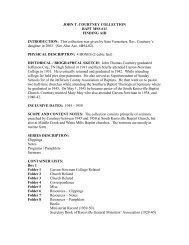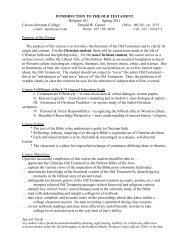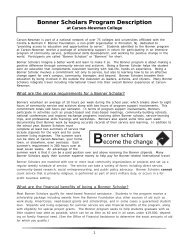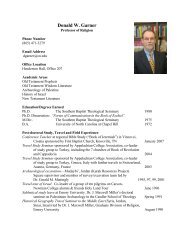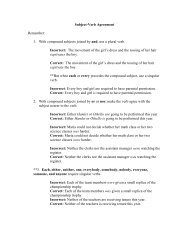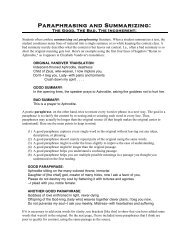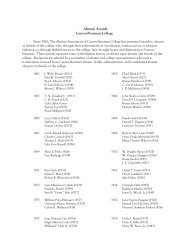a comparative analysis of louis durey and francis poulenc's settings ...
a comparative analysis of louis durey and francis poulenc's settings ...
a comparative analysis of louis durey and francis poulenc's settings ...
You also want an ePaper? Increase the reach of your titles
YUMPU automatically turns print PDFs into web optimized ePapers that Google loves.
48<br />
Durey emphasizes backwardness in “L’Écrevisse,” <strong>and</strong> in doing so, expresses<br />
movement. Durey sets the phrase nous nous en allons (you <strong>and</strong> I—we move) at measure<br />
11 in a triplet, indicating movement. In the following measures, the listener discovers that<br />
the movement is not forward, but backward—like the crayfish.<br />
Durey’s admiration for Debussy is apparent in this piece. The ascending chords in<br />
measures 9-12 are especially reminiscent <strong>of</strong> Debussy’s ethereal La cathédrale engloute<br />
(The Sunken Cathedral). In measure 8, the ascending nine-note pattern is based on a fivenote,<br />
or pentatonic, scale—another element indicative <strong>of</strong> Debussy’s work.



